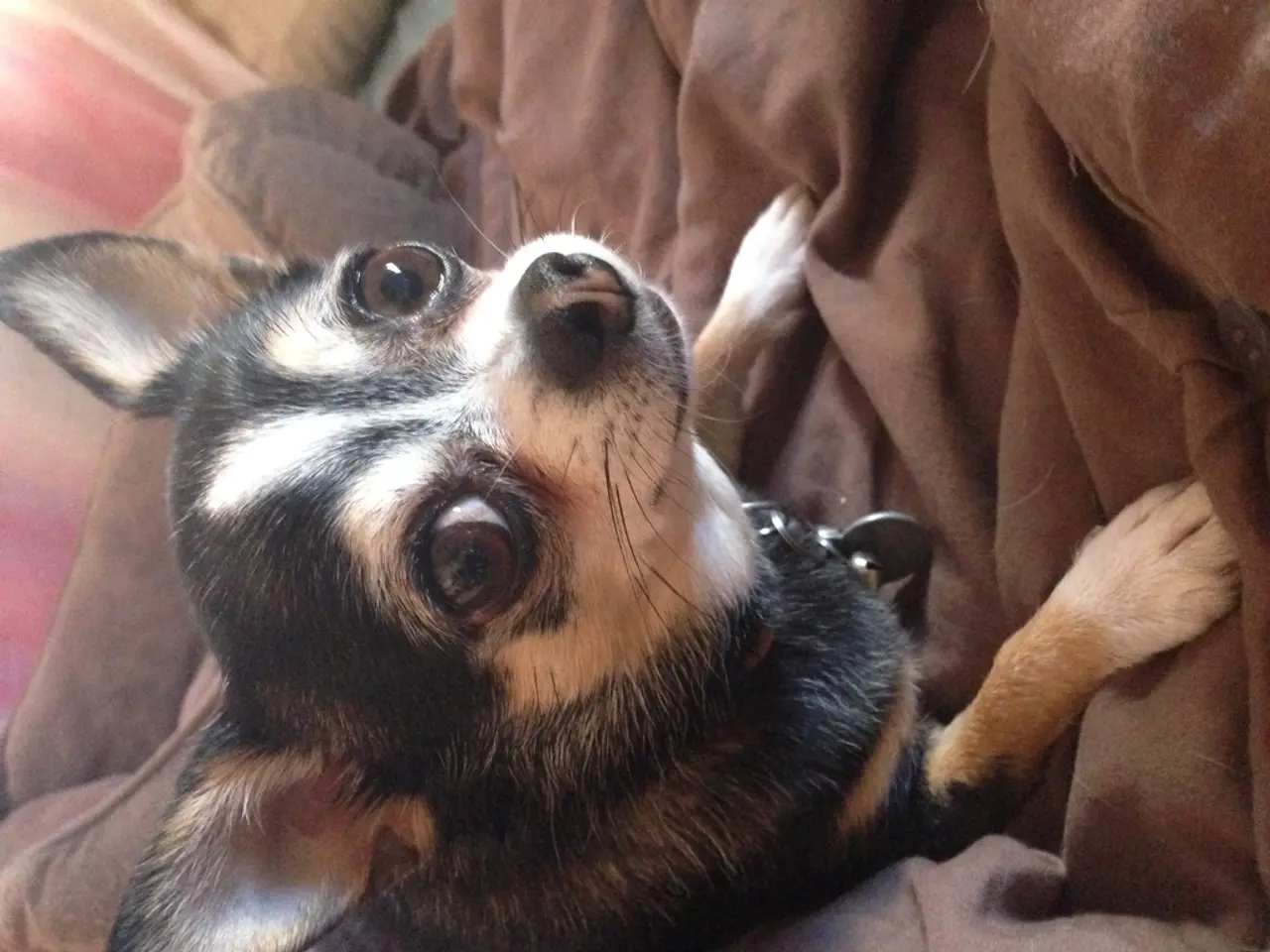Dogs Can Develop Skin Imperfections, Similar to Pimples
Dog acne, a common skin condition, affects various breeds including Doberman Pinschers, German Shorthaired Pointers, English Bulldogs, Rottweilers, and Weimaraners. This article will explore the causes, symptoms, and treatment options for dog acne in these popular breeds.
Causes
The predisposition to dog acne in these breeds is often linked to genetics, leading to oily skin and increased susceptibility. Bacterial infections, allergies, and environmental factors also play a significant role in causing dog acne.
Genetics
These breeds have a known genetic predisposition for oily skin and canine acne, making them more prone to developing acne on the face, especially around the chin and lips.
Bacterial Infection
Acne in dogs is often caused by inflammation and infection of hair follicles due to bacterial overgrowth.
Demodectic Mange
A mite infestation by Demodex mites can cause skin lesions resembling acne, particularly if the immune system is weakened.
Hormonal Changes
Puppies and adolescent dogs often develop acne during hormonal changes.
Allergies and Immune Responses
Allergies (both environmental and food-related) and immune reactions can trigger or worsen acne by causing skin inflammation.
Environmental Factors
Stress and poor skin hygiene may exacerbate bacterial growth leading to flare-ups.
Symptoms
Dog acne presents as red spots, pimples, pustules, and blackheads primarily around the chin, lips, and muzzle. Severe cases may cause swollen bumps and possible pain or discomfort. Mild itchiness or irritation may occur, and in secondary infections, pustules may produce pus, and there can be signs of inflammation such as redness.
Treatment Options
Treatment for dog acne focuses on maintaining good skin hygiene, managing infections, treating potential mite infestations, and addressing allergies under veterinary guidance.
Regular Gentle Cleansing
Maintaining good skin hygiene by cleaning the affected areas regularly with gentle, veterinarian-recommended cleansers to reduce bacteria and oil buildup is crucial.
Veterinary Care for Secondary Infection
If pustules or infection develops, antibiotic or antiseptic treatments prescribed by a vet may be necessary.
Treatment for Demodectic Mange
If mites are involved, veterinary diagnosis through skin scraping and appropriate antiparasitic treatment is required.
Avoid Irritants
Minimizing contact with rough surfaces or substances that may irritate the skin is essential.
Managing Allergies
Identifying and controlling allergies through diet changes or allergy treatments may reduce flare-ups.
Stress Reduction and Immune Support
Keeping dogs in healthy, low-stress environments helps prevent immune-related skin issues.
Regular Vet Check-ups
For early detection and management of any flare-ups and complications, regular vet check-ups are recommended.
Responsible breeding practices can help reduce the incidence of dog acne in future generations.
Important Considerations
- Popping a dog's pimple can lead to increased inflammation, pain, and potential bacterial infections.
- If the pimples appear to be spreading or appearing on other parts of the body, consult a veterinarian.
- For mild cases of acne, at-home remedies can be tried. However, it's essential to consult a vet first.
- Human-intended acne treatments or ointments should never be used on dogs.
- The underlying cause of the breakout should be treated first, often environmental or allergic causes.
- Doberman Pinschers, German Shorthaired Pointers, English Bulldogs, Rottweilers, and Weimaraners are breeds that are genetically predisposed to developing acne.
- A warm compress may help to open up a white or yellow pimple in a dog.
- Keeping a dog's face clean and dry can reduce the incidence of bacterial skin infections.
- Swapping out plastic bowls or toys may help prevent skin irritation.
- Young dogs are more likely to develop pimples.
- Good hygiene procedures, such as keeping the dog's face and body clean and dry, can help prevent dog acne.
- Extra curious or adventurous dogs may experience more acne.
- Pimples in dogs are most commonly found on the muzzles and lower lips.
- Dogs can develop pimples, a symptom of acne, similar to humans.
Dog acne can stem from genetics, leading to oily skin and an increased susceptibility in breeds like Doberman Pinschers, German Shorthaired Pointers, English Bulldogs, Rottweilers, and Weimaraners. Environmental factors, such as stress and poor skin hygiene, can also exacerbate the condition.
Treatment options for dog acne focus on maintaining good skin hygiene, managing infections, and addressing underlying causes like allergies. Regular gentle cleansing with veterinarian-recommended cleansers is essential to reduce bacteria and oil buildup. If pustules or infections develop, antibiotic or antiseptic treatments may be necessary under a vet's guidance.




